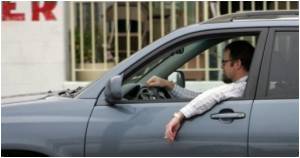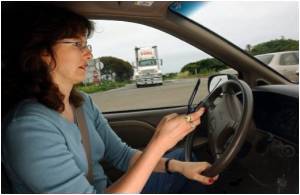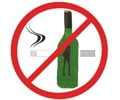
It seems to have spawned a generation that can't bear to be out of touch, electronically at least.
According to RAC figures, worryingly nearly one quarter of motorists aged 17 to 24 now admit to accessing email or social-networking sites from their phones while driving.
Nick Reed, a senior human factors researcher who led the project by the TRL for the Institute of Advanced Motorists (IAM), found that those who use their smartphones on the move routinely spend up to 60 percent of their time looking down at the device instead of focusing on the road ahead,.
As compared to this, those without phones spend just 10 percent of the time, on an average, looking away, for instance to check the speedometer, satnav or in-car entertainment.
Advertisement
"You may get away with it for a while but if you do it consistently, you will have an accident," he said.
Advertisement
Police usually only report collisions where someone has been injured, and mobile phone users often slow down to compensate for their unsafe behaviour, which means their actions cause less severe crashes - leading to a lower level of reporting.
"The precise time of an accident, to within a few seconds, can be very difficult to establish so proving that a phone was in use before the crash, rather than just afterwards, can be tricky," Peter Rodger, the IAM's chief examiner, said.
So official government figures attributing 1,690 injury road accidents to mobile phone use between 2006 and 2010 might be only the tip of the iceberg.
Where official statistics fail to illuminate this growing safety problem, the TRL study has, largely, shone a light.
By electronically monitoring 28 young drivers aged 18 to 25 with an array of CCTV cameras inside the Honda Civic simulator, Reed found that reaction times to visual and auditory stimuli - such as those experienced on a real-life journey - were nearly 38 per cent worse while they were using smartphones.
Drivers who have seen cars inexplicably veer across the lanes of a motorway will not be surprised to hear that the 28 guinea pigs also swerved out of lane more frequently and reacted more slowly when vehicles ahead braked.
"There was a tendency to reduce speed to use the smartphone, however this did not prevent driving performance from deteriorating," the study said.
"The results clearly show that using Facebook via a smartphone while driving is dangerous," it said.
In fact, the study revealed, in terms of reaction times to hazards, that using a smartphone on the move ranks only behind making a call on a hand-held phone which, previous studies show, delays reactions by nearly 46 percent, compared to nearly 38 percent for those concentrating on, say, a Facebook page.
By contrast, there was a 37 percent delay in reactions for those texting, 26 percent for those making a hands-free call, 21 percent for those on cannabis and 12 percent for those at the UK alcohol drink-drive limit.
Source-ANI











